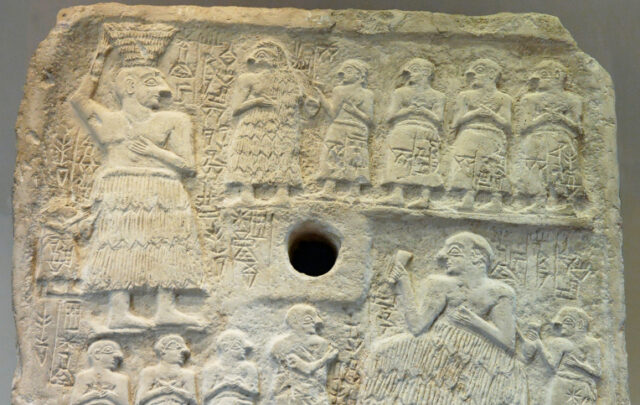Click on the headline (link) for the full text.
Many more articles are available through the Energy Bulletin homepage
How to Get Your Home Off the Water “Grid”
Jo-Shing Yang, AlterNet
… In this time of uncertainties and chaos, how can individuals and communities help themselves to prepare their water systems so as to keep themselves alive and healthy? The first step is to design and plan for alternatives to the colossal, centralized chemical-intensive, fossil-fuel-intensive conventional water and wastewater systems.
What’s Wrong with Our Current Water Systems?
Fossil fuel and electricity from the grid are the lifeblood of conventional water- and wastewater-treatment systems, which are designed and built to rely on fossil fuel as their sole energy source. Without fossil fuel, there simply would be no water and wastewater treatment. When the supply and delivery of fossil fuel run out, one can expect the so-called First World to revert back to the pre-plumbing days of the early Industrial Revolution, not unlike the days when major European cities were literally cesspools of stagnated human wastes breeding diseases, as raw sewage flowed through streets directly into streams, rivers, lakes, and oceans.
Chemicals are another lifeblood of the conventional water systems. Here “conventional water- and wastewater-treatment systems” refer to the municipality- or corporate-owned, large-scale, centralized, and highly engineered processes and technologies, which require a constant and substantial feed stream of fossil-fuel energy and chemicals for treatment. These systems generate byproducts and pollutants during treatment (e.g., waste sludge, waste gases, and waste chemicals — all requiring disposal) and generally cost several million dollars to build, operate, and maintain.
(9 February 2009)
EntropyPawsed Water Use
Bonnie Gifford. EntropyPawsed
At Entropy Pawsed, we use less than 10 gallons of water a day. We know this because we hand pump it from our well.
We are blessed to live in a location where water is abundant. The Appalachian Mountains in our region have many springs and streams, and potable deep well water is still easy to find. So why concern ourselves with conserving water?
Energy conservation is an important principle of Permaculture. Water use requires energy input. In cities, this energy input is in the form of water purification, water distribution infrastructure, and pumping systems. In our case, the initial input was in the form of the fossil fuels needed to build and operate the equipment to drill the well. Permaculture accepts the use of fossil fuels as a means to create systems that will minimize or eliminate future fossil fuel use. Certainly, fossils fuels were used to make the hand water pump. And, with proper maintenance, the pump will last for many generations, with energy savings exceeding the manufacturing energy input.
When we installed our well in 2003, the hand pump was three times more expensive than the electric pump (~$1,200 vs. $400); however, we are off grid and thought the benefits warranted the additional expense. We chose a hand pump partly because we have a small solar power system (see module …..), and did not want to use our limited electricity on an electric well pump. We also wanted to avoid the expense and energy input of the infrastructure necessary for running water. Indoor plumbing would have either necessitated a different heating system in our cabin (see module…) or prevented us from leaving home during the colder times of the year. We did not want to be so constrained by something that only a few generations ago was considered a luxury, not a necessity.
Usually once a day (depending on our usage and the weather) we pump water from the well into gallon water jugs we bring inside. Our primary water uses are for drinking, cooking, and washing dishes, using two to three gallons daily for these purposes.
(10 February 2009)
Video at original.
“When Technology Fails” (book review)
Carolyn Baker, Speaking Truth to Power
Rarely in the specialized milieu of industrial civilization does one encounter a Renaissance man or woman-someone who is well-versed in a wide spectrum of disciplines and who can expound upon them in writing that is both articulate and engaging. So when I discovered Mat Stein’s phenomenal When Technology Fails: A Manual For Self-Reliance, Sustainability, and Surviving The Long Emergency, I immediately contacted the publisher, Vermont’s own Chelsea Green, for a review copy of this fabulous tome on preparing wisely for the end of the world as we have known it.
While this book at first glance may resemble something of a 21st century Whole Earth Catalog, it is so much more. Whereas that classic of some three decades ago served as a primer for individuals and groups seeking to live simply and sustainably, primarily because it felt good and seemed like the right thing to do, When Technology Fails, feels as if it has erupted out of the urgent necessity of this moment. Its intention is unmistakable: to offer a “bible for emergency preparation and survival” as well as green and healthy living. However, one should not assume that this book is a “survivalist” manual. It isn’t about grabbing your bug-out bag with a few cans of beans in it and running into the woods dressed in camo. It is a book about surviving but also about living well in harmony with the earth community while using methods that allow one’s lifestyle to endure and flourish.
(10 February 2009)





